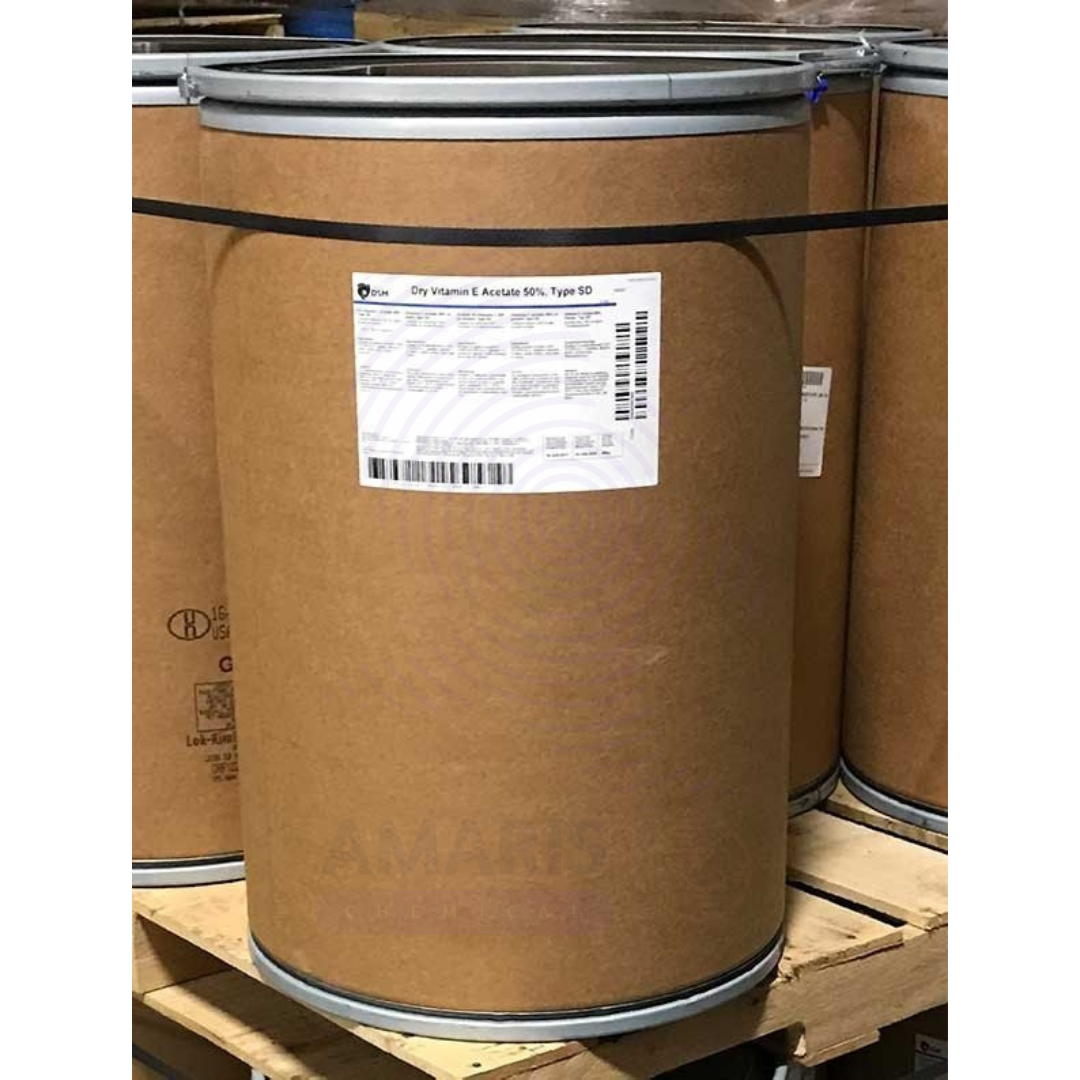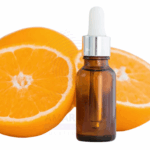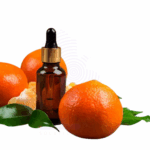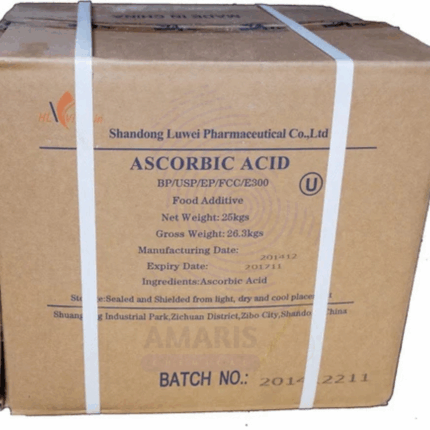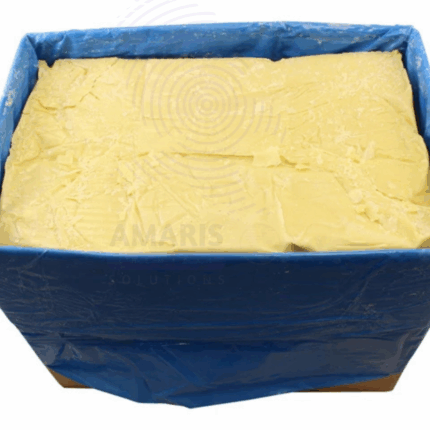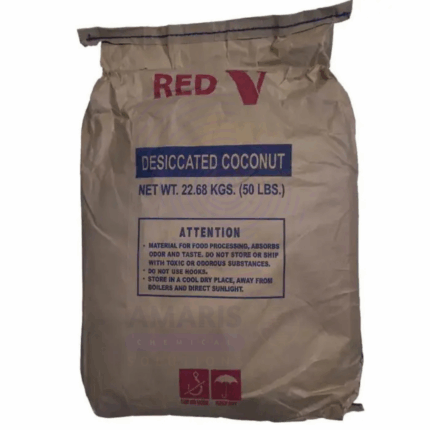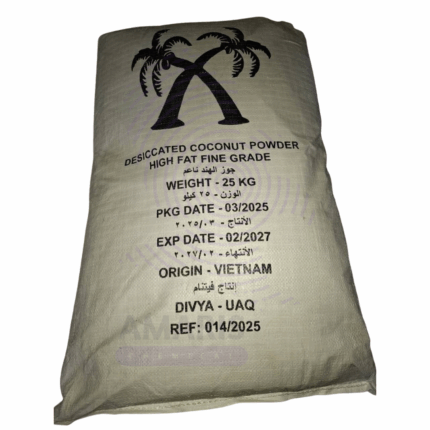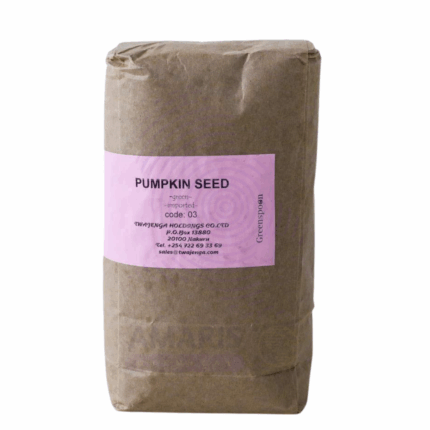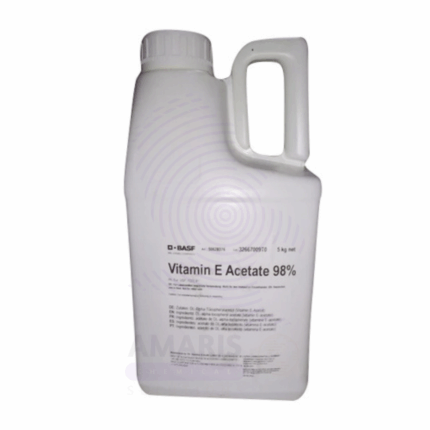Vitamin E Acetate Powder
Whatsapp Order
Vitamin E Acetate Powder, also known as DL-Alpha-Tocopheryl Acetate Powder, is a dry, free-flowing, encapsulated form of Vitamin E, standardized to contain 50% of active DL-Alpha-Tocopheryl Acetate. It is designed for easy handling and uniform mixing in dry formulations and is ideal for use in nutritional supplements, fortified foods, and animal feed. The microencapsulation enhances stability against oxidation, heat, and light, ensuring long shelf life.
Description
Table of Contents
Toggle
Vitamin E Acetate Powder
Primary Uses
- Nutraceuticals & Dietary Supplements
- Tablet & Capsule Formulations: Commonly used in multivitamin tablets, capsules, and effervescent powders for antioxidant support.
- Functional Foods & Beverages: Added to powdered drink mixes, protein blends, and energy bars for nutritional fortification.
- General Wellness Products: Used for promoting cardiovascular health, immune function, and cellular protection.
- Food & Beverage Industry
- Food Fortification: Incorporated into flour, breakfast cereals, dairy powders, and infant nutrition products.
- Bakery & Snack Applications: Used in dry bakery mixes and health snacks where oil-based vitamin E is unsuitable.
- Meal Replacements: Employed in powdered nutritional beverages and complete meal mixes for its stability and ease of dosing.
- Pharmaceutical Industry
- Therapeutic Formulations: Used in solid oral dosage forms to support skin and immune health, reduce oxidative stress, and as part of vitamin deficiency treatments.
- Stabilizing Agent: Used in drug formulations where antioxidant protection is necessary to prevent degradation.
Secondary Uses
- Animal Nutrition
- Feed Premixes: Added to poultry, swine, cattle, and pet feed for reproductive health, immunity, and growth performance.
- Veterinary Supplements: Used in powder or tablet form for pets to support skin, coat, and immune system function.
- Cosmetics & Personal Care (Dry Formulations)
- Cosmetic Powders: Occasionally used in powdered face masks, cleansers, or exfoliants for antioxidant benefits.
- Nutritional Cosmetics: Included in nutricosmetic products promoting beauty from within.
- Research & Development
- Stability Testing: Used in studies evaluating the release and stability of fat-soluble vitamins in dry formulations.
- Encapsulation Research: Explored for delivery systems involving controlled-release powders.
KEY PRODUCT FEATURES
1. Basic Identification Attributes
- Chemical Name (IUPAC): (±)-2,5,7,8-Tetramethyl-2-[(4,8,12-trimethyltridecyl)oxy]chroman-6-yl acetate
- Common/Trade Name: Vitamin E Acetate 50% Powder, DL-Alpha-Tocopheryl Acetate Powder
- CAS Number: 7695-91-2
- HS Code: 2936.28.00
- Synonyms: Tocopherol Acetate Powder, Encapsulated Vitamin E
2. Physical & Chemical Properties
- Physical State: Free-flowing powder
- Color & Odor: White to off-white; odorless or faint vitamin-like odor
- Solubility: Dispersible in water (due to encapsulation); insoluble in water in pure form
- Assay (Vitamin E Content): 50% DL-Alpha-Tocopheryl Acetate by weight
- Carrier/Substrate: Often spray-dried with carriers like gelatin, starch, or modified cellulose
- Stability: Excellent shelf stability when stored properly
3. Safety & Hazard Attributes
- GHS Classification: Not classified as hazardous
- Toxicity: Low toxicity; safe within dietary intake limits
- Exposure Limits: No occupational exposure limits established; avoid inhaling dust in large quantities
4. Storage & Handling Attributes
- Storage Conditions: Store in a cool, dry place away from direct sunlight and moisture
- Container Type: Food-grade or pharmaceutical-grade drums, fiber cartons with polyethylene liners
- Shelf Life: 24 months under recommended conditions
- Handling Precautions: Avoid moisture exposure; use dust control in large-scale handling
5. Regulatory & Compliance Attributes
- Complies with: BP, USP, EP, FCC standards
- Manufactured under: GMP and ISO 9001-certified conditions
- GRAS Status: Generally Recognized As Safe for food use
- Regulatory Approvals: Accepted globally for use in food, supplements, and animal feed
6. Environmental & Health Impact
- Biodegradability: Readily biodegradable
- Ecotoxicity: Not expected to pose environmental risks at typical concentrations
- Bioaccumulation: Not significant
SAFETY HANDLING PRECAUTIONS
Safety Handling Precautions
- PPE Required: Gloves, dust mask, and safety goggles
- Handling Guidelines: Minimize dust formation; keep container tightly closed when not in use
- Storage Measures: Keep sealed, dry, and protected from heat and humidity
First Aid Measures
- Inhalation: Move to fresh air; seek medical help if discomfort persists
- Skin Contact: Wash with soap and water
- Eye Contact: Flush thoroughly with water for several minutes
- Ingestion: Rinse mouth; seek medical attention for large amounts
Firefighting Measures
- Fire Hazards: May be combustible as a fine powder
- Extinguishing Media: Use dry chemical, foam, or CO₂
- Hazardous Combustion Products: Carbon oxides and other irritants
Related products
African Potato Extract
African Potato Extract is derived from the plant Hypoxis hemerocallidea, a medicinal plant native to southern Africa. It is commonly used in traditional African medicine for its anti-inflammatory, antioxidant, and immune-boosting properties. The active compound in the extract is hypoxoside, which is converted in the body to rooperol, a potent antioxidant. African Potato Extract is often used as a complementary treatment for conditions like arthritis, prostate issues, and certain infections, though scientific evidence on its effectiveness is still limited.
Ascorbic Acid
Ascorbic Acid, commonly known as Vitamin C, is a water-soluble vitamin and potent antioxidant essential for collagen synthesis, immune function, and protection against oxidative stress. It is widely used as a nutritional supplement, food preservative, and additive to enhance shelf life and nutritional value. Naturally present in citrus fruits and various vegetables, ascorbic acid is also important in pharmaceutical, cosmetic, and animal feed industries due to its health benefits and preservative qualities.
Cocoa Butter
Cocoa Butter, also known as Theobroma oil, is a pale-yellow, edible fat extracted from cocoa beans, primarily from Theobroma cacao. It has a smooth, creamy texture and a mild, characteristic chocolate aroma. Cocoa Butter is solid at room temperature but melts near body temperature, which gives it a luxurious feel when applied to skin or consumed. It is highly valued for its emollient, moisturizing, and protective properties. Cocoa Butter is widely used in cosmetics, pharmaceuticals, food, and confectionery industries. Its stable composition rich in fatty acids such as stearic, palmitic, and oleic acids imparts excellent oxidative stability and a long shelf life.
Desiccated Coconut
Desiccated Coconut is finely shredded, dried coconut meat derived from mature coconuts (Cocos nucifera). It is produced by removing the coconut water, then drying the white coconut kernel to reduce moisture content to less than 3%. The drying process preserves the natural flavor, aroma, and nutritional content while extending shelf life. Desiccated coconut is commonly available in various particle sizes and grades, suitable for culinary, bakery, confectionery, and food processing applications. It is valued for its rich texture, nutty flavor, and ability to add moisture and fat to food products.
Ferulic Acid
Ferulic Acid is a naturally occurring hydroxycinnamic acid classified as a phenolic compound with potent antioxidant properties. It exists as a pale yellow to light brown crystalline powder with a faint characteristic odor. Ferulic Acid is commonly found in the cell walls of various plants such as rice bran, wheat, oats, coffee, apples, and fruits, where it plays a role in plant structural integrity and defense against environmental stress. It is valued across multiple industries—cosmetics, pharmaceuticals, nutraceuticals, food, and agriculture—due to its ability to neutralize free radicals, absorb UV radiation, and exhibit anti-inflammatory and antimicrobial activities.
Pumpkin Kernels
Pumpkin kernels, also known as pepitas, are the edible seeds extracted from pumpkins. They are nutrient-rich, containing healthy fats, proteins, vitamins, and minerals, making them a popular ingredient in food products and snacks. Supplied in bulk 25 kg packaging, pumpkin kernels are widely used for their flavor, texture, and nutritional benefits in culinary and industrial applications.
Pure Honey
Pure Honey is a natural sweetener produced by honeybees from the nectar of flowers. It is a viscous, golden liquid known for its sweetness, flavor complexity, and natural preservative qualities. Packed in 30kg jerrycans for bulk supply, pure honey is widely used in food, pharmaceutical, and cosmetic industries due to its nutritional benefits, antimicrobial properties, and versatility.
Vitamin E Acetate Oily
Vitamin E Acetate Oily, also known as DL-Alpha-Tocopheryl Acetate, is a synthetic, oil-soluble form of Vitamin E with high purity and exceptional oxidative stability. This viscous liquid is ideal for applications requiring direct incorporation into oil-based systems such as soft gel capsules, cosmetic formulations, and fortified edible oils. Its stability under processing and storage conditions makes it a preferred form of Vitamin E for nutritional, pharmaceutical, cosmetic, and food-grade applications.


 Preservatives(food)
Preservatives(food) Flavor Enhancers
Flavor Enhancers Acidulants
Acidulants Sweeteners
Sweeteners Antioxidants
Antioxidants Colorants(food)
Colorants(food) Nutraceutical Ingredients (food)
Nutraceutical Ingredients (food) Nutrient Supplements
Nutrient Supplements Emulsifiers
Emulsifiers
 Collectors
Collectors Dust Suppressants
Dust Suppressants Explosives and Blasting Agents
Explosives and Blasting Agents Flocculants and Coagulants
Flocculants and Coagulants Frothers
Frothers Leaching Agents
Leaching Agents pH Modifiers
pH Modifiers Precious Metal Extraction Agents
Precious Metal Extraction Agents
 Antioxidants(plastic)
Antioxidants(plastic) Colorants (Pigments, Dyes)
Colorants (Pigments, Dyes) Fillers and Reinforcements
Fillers and Reinforcements Flame Retardants
Flame Retardants Monomers
Monomers Plasticizers
Plasticizers Polymerization Initiators
Polymerization Initiators Stabilizers (UV, Heat)
Stabilizers (UV, Heat)
 Antifoaming Agents
Antifoaming Agents Chelating Agents
Chelating Agents Coagulants and Flocculants
Coagulants and Flocculants Corrosion Inhibitors
Corrosion Inhibitors Disinfectants and Biocides
Disinfectants and Biocides Oxidizing Agents
Oxidizing Agents pH Adjusters
pH Adjusters Scale Inhibitors( water)
Scale Inhibitors( water)
 Antioxidants(cosmetic)
Antioxidants(cosmetic) Emollients
Emollients Fragrances and Essential Oils
Fragrances and Essential Oils Humectants
Humectants Preservatives
Preservatives Surfactants(cosmetic)
Surfactants(cosmetic) Thickeners
Thickeners UV Filters
UV Filters
 Fertilizers
Fertilizers Soil Conditioners
Soil Conditioners Plant Growth Regulators
Plant Growth Regulators Animal Feed Additives
Animal Feed Additives Biostimulants
Biostimulants Pesticides (Herbicides, Insecticides, Fungicides)
Pesticides (Herbicides, Insecticides, Fungicides)
 Active Pharmaceutical Ingredients (APIs)
Active Pharmaceutical Ingredients (APIs) Excipients
Excipients Solvents(pharmaceutical)
Solvents(pharmaceutical) Antibiotics
Antibiotics Antiseptics and Disinfectants
Antiseptics and Disinfectants Vaccine Adjuvants
Vaccine Adjuvants Nutraceutical Ingredients (pharmaceutical)
Nutraceutical Ingredients (pharmaceutical) Analgesics & Antipyretics
Analgesics & Antipyretics
 Analytical Reagents
Analytical Reagents Solvents(lab)
Solvents(lab) Chromatography Chemicals
Chromatography Chemicals Spectroscopy Reagents
Spectroscopy Reagents microbiology-and-cell-culture-reagents
microbiology-and-cell-culture-reagents Molecular Biology Reagents
Molecular Biology Reagents Biochemical Reagents
Biochemical Reagents Inorganic and Organic Standards
Inorganic and Organic Standards Laboratory Safety Chemicals
Laboratory Safety Chemicals Specialty Laboratory Chemicals(Special Laboratory Equipment)
Specialty Laboratory Chemicals(Special Laboratory Equipment)
 Demulsifiers
Demulsifiers Hydraulic Fracturing Fluids
Hydraulic Fracturing Fluids Scale Inhibitors(oil)
Scale Inhibitors(oil) Surfactants(oil)
Surfactants(oil) Drilling Fluids
Drilling Fluids
 Dyes and Pigments
Dyes and Pigments Bleaching Agents
Bleaching Agents Softening Agents
Softening Agents Finishing Agents
Finishing Agents Antistatic Agents
Antistatic Agents
 Admixtures
Admixtures Waterproofing Agents
Waterproofing Agents Sealants and Adhesives
Sealants and Adhesives Curing Compounds
Curing Compounds Concrete Repair Chemicals
Concrete Repair Chemicals Anti-Corrosion Coatings
Anti-Corrosion Coatings
 Surfactants(cleaning)
Surfactants(cleaning) Builders
Builders Enzymes
Enzymes Solvents (Cleaning)
Solvents (Cleaning) Fragrances
Fragrances
 Electronic Chemicals
Electronic Chemicals Catalysts
Catalysts Lubricants
Lubricants Photographic Chemicals
Photographic Chemicals Refrigerants
Refrigerants Automotive chemicals
Automotive chemicals Pyrotechnic Chemicals
Pyrotechnic Chemicals
 Biodegradable Surfactants
Biodegradable Surfactants Bio-based Solvents
Bio-based Solvents Renewable Polymers
Renewable Polymers Carbon Capture Chemicals
Carbon Capture Chemicals Wastewater Treatment Chemicals
Wastewater Treatment Chemicals
 Pigments
Pigments Solvents(paint)
Solvents(paint) Specialty Coatings
Specialty Coatings Binders/Resins
Binders/Resins Additives
Additives Driers
Driers Anti-Corrosion Agents
Anti-Corrosion Agents Functional Coatings
Functional Coatings Application-Specific Coatings
Application-Specific Coatings
 Fresh Herbs
Fresh Herbs Ground Spices
Ground Spices Whole Spices
Whole Spices Spice Blends
Spice Blends Dried Herbs
Dried Herbs
 Leavening Agents
Leavening Agents Dough Conditioners
Dough Conditioners Flour Treatments
Flour Treatments Fat Replacers
Fat Replacers Decoratives
Decoratives Preservatives(baking)
Preservatives(baking)
 Plasticizers & Softeners
Plasticizers & Softeners Reinforcing Agents
Reinforcing Agents Adhesion Promoters
Adhesion Promoters Vulcanizing Agents
Vulcanizing Agents Antidegradants
Antidegradants Blowing Agents
Blowing Agents Fillers & Extenders
Fillers & Extenders Accelerators & Retarders
Accelerators & Retarders